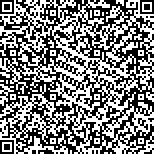| 引用本文: | 陈畅,傅亮,毕乃双,葛汝平,刘光兴,庄昀筠,杨作升,范德江,姚鹏,刘瑞志,陈洪举.南海西沙永乐龙洞浮游动物的群落组成及昼夜垂直分布特征.海洋与湖沼,2018,49(3):594-603. |
| |
|
| |
|
|
| 本文已被:浏览 2304次 下载 2040次 |

码上扫一扫! |
|
|
| 南海西沙永乐龙洞浮游动物的群落组成及昼夜垂直分布特征 |
|
陈畅1,2,3, 傅亮4, 毕乃双5, 葛汝平1,2,3, 刘光兴1,2,3, 庄昀筠1,2,3, 杨作升5, 范德江5, 姚鹏6, 刘瑞志7, 陈洪举1,2,3
|
|
1.中国海洋大学海洋环境与生态教育部重点实验室 青岛 266100;2.中国海洋大学环境科学与工程学院 青岛 266100;3.青岛海洋科学与技术国家实验室 海洋生态与环境科学功能实验室 青岛 266200;4.三沙航迹珊瑚礁保护研究所 三沙 573199;5.中国海洋大学海底科学与探测技术教育部重点实验室 青岛 266100;6.中国海洋大学海洋化学理论与工程技术教育部重点实验室 青岛 266100;7.中国环境科学研究院河口与海岸环境国家重点实验室 北京 100018
|
|
| 摘要: |
| 南海西沙群岛的永乐龙洞(16°31'30"N,111°46'05"E)目前是世界上最深的海洋蓝洞,深达300.89m,具有特殊的水文、地质、化学等生态环境特征,存在大厚度无氧层等特殊现象。为了解这一特殊生境浮游动物的组成和分布特征,于2017年3月在永乐龙洞及其邻近水域开展了多学科综合调查。浮游动物采样使用浅水Ⅱ型浮游生物网在洞内垂直分层拖网(昼夜各1次),并在潟湖(昼夜各1次)和毗邻外礁坡进行底表垂直拖网,分析浮游动物种类组成、丰度、优势种、生物多样性和垂直分布特征。结果显示,龙洞内共记录浮游动物41种(含未定种)和14类浮游幼虫;澙湖内有15种(含未定种)浮游动物和7类浮游幼虫;外礁坡有124种(含未定种)浮游动物和20类浮游幼虫。龙洞与澙湖浮游动物种类组成相似,但香农-威纳指数、均匀度和丰富度差别较大;外礁坡物种组成与龙洞内差异明显。细长腹剑水蚤(Oithona attenuata)在昼夜都是龙洞内占据绝对优势的物种,坚长腹剑水蚤(O.rigida)和长刺小厚壳水蚤(Scolecithricella longispinosa)也有较高丰度。洞内浮游动物表现出明显的昼夜垂直移动现象,日间丰度最大层在60—90m,夜间上移至20—40m。龙洞内更高的空间异质性,可能是其浮游动物生物多样性和丰度相较潟湖更高的原因。浮游动物的昼夜垂直移动主要表现在90m以浅的水层中,80—90m的强烈跃层可能是浮游动物上下跨越的障碍。90—150m的无氧水环境中尚有丰度较高的桡足类生存。 |
| 关键词: 永乐龙洞 浮游动物 群落结构 昼夜垂直移动 无氧水体 |
| DOI:10.11693/hyhz20171200328 |
| 分类号:Q958 |
| 基金项目:中央高校基本科研业务费项目“西沙永乐龙洞生态环境调查”项目,201762038号;三沙航迹珊瑚礁保护研究所航迹南海海洋科研发展项目,HJLD17-01号。 |
附件 |
|
| ZOOPLANKTON COMMUNITY COMPOSITION AND DIEL VERTICAL DISTRIBUTION IN THE YONGLE BLUE HOLE, XISHA ISLANDS, SOUTH CHINA SEA |
|
CHEN Chang1,2,3, FU Liang4, BI Nai-Shuang5, GE Ru-Ping1,2,3, LIU Guang-Xing1,2,3, ZHUANG Yun-Yun1,2,3, YANG Zuo-Sheng5, FAN De-Jiang5, YAO Peng6, LIU Rui-Zhi7, CHEN Hong-Ju1,2,3
|
|
1.Key Laboratory of Ministry of Education for Marine Environment and Ecology, Ocean University of China, Qingdao 266100, China;2.College of Environmental Science and Engineering, Ocean University of China, Qingdao 266100, China;3.Laboratory of Marine Ecology and Environmental Science, Qingdao National Laboratory for Marine Science and Technology, Qingdao 266200, China;4.Sansha Trackline Institute of Coral Reef Environment Protection, Sansha 573199, China;5.Key Laboratory of Submarine Geosciences and Prospecting Technique, Ocean University of China, Ministry of Education, Qingdao 266100, China;6.Key Laboratory of Marine Chemistry Theory and Technology, Ocean University of China, Ministry of Education, Qingdao 266100, China;7.Chinese Research Academy of Environmental Sciences, State Environmental Protection Key Laboratory of Estuarine and Coastal Environment, Beijing 100018, China
|
| Abstract: |
| The Yongle blue hole (Yongle Longdong in Chinese, 16°31'30"N, 111°46'05"E) is the world's deepest blue hole (300.89m,) with special hydrological, geological, chemical, and other environmental characteristics, including anoxic layer and other peculiar features. To obtain the information of the zooplankton composition and distribution in this special habitat, an integrated survey of the hole and its adjacent lagoons was conducted in March (spring) 2017. Samples were collected at daytime and nighttime with 160μm mesh net by vertical towing in six layers (0-10, 10-20, 20-40, 40-60, 60-90, and 90-120m) in the hole, and additional two bottom-to-surface (daytime and nighttime) and 0-200m in outer reef slope in the lagoon. The samples were analyzed in terms of species composition, abundance, dominant species, biodiversity, and vertical distribution. 41 species (including undetermined) and 14 groups of planktonic larvae were identified in the hole, 15 species (including undetermined) and 7 groups in the lagoon, 124 species and 20 groups in outer reef slope. Species composition in Yongle blue hole and lagoon were similar to a certain extent but quite different in biodiversity indices. At outer reef slope, species composition within the hole differed greatly from those areas beyond the hole, indicating different communities. Oithona attenuata was dominated, followed by O. rigida and Scolecithricella longispinosa at both daytime and nighttime. The zooplankton showed a diel vertical distributional difference, maximum abundance was found in 60-90m layer at daytime, and in 20-40m layer at nighttime. The high spatial heterogeneity could be the cause of the higher biodiversity in the blue hole. The diel vertical migration (DVM) might be hindered by the strong thermocline at 80-90m, thus mainly occurred in layers above 90m. Relatively high abundance of Copepods were discovered in the anoxic waters of 90-150m layer. |
| Key words: Yongle blue hole zooplankton community structure diel vertical migration (DVM) anoxic waters |
|
|
|
|
|
